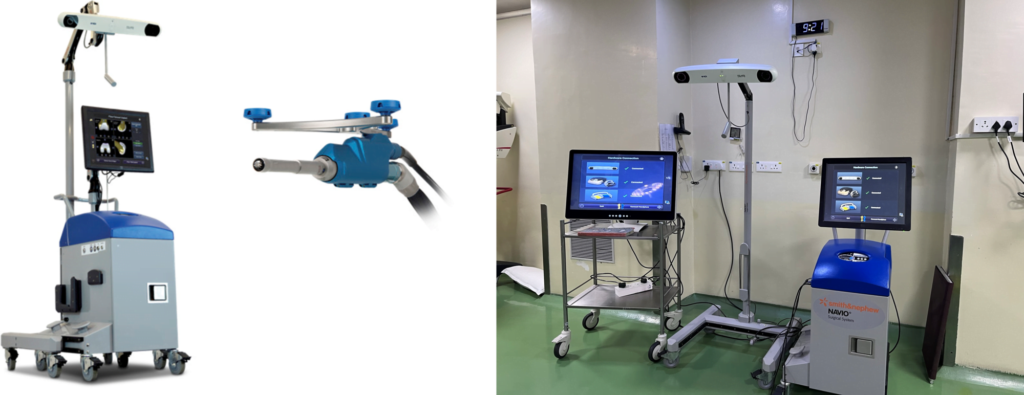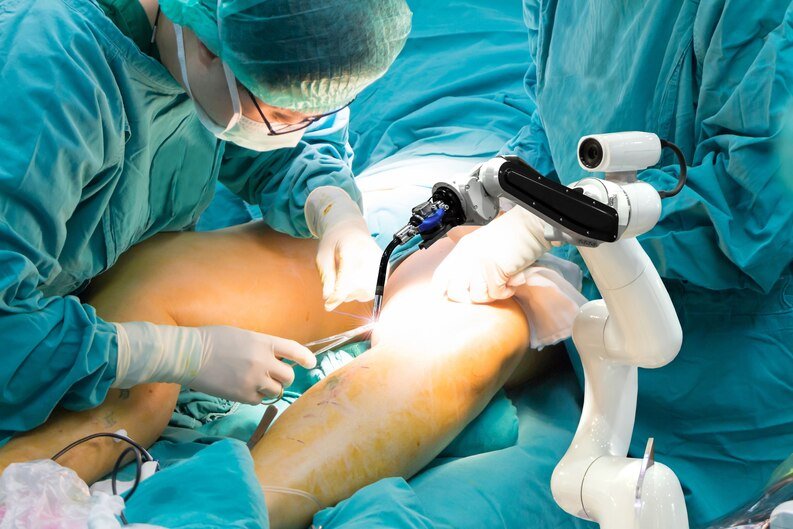Robotic Knee Replacement – What You Need to Know
admin
December 4, 2022

- Whether you are considering a robotic knee replacement
- you already have one, there are some important things you need to know. This article is designed to address the following issues: Recovery time, Risks, and procedure.
Recovery time

Surgical procedures such as robotic knee replacement may result in a shorter recovery time, which means patients can return to a more active lifestyle sooner. The benefits of the technology are still being evaluated in clinical trials, and more long-term data is needed to understand the full impact of these techniques.
The surgical procedure involves removing diseased bone from the knee and replacing it with a new artificial implant. The procedure is a key part of improving mobility and quality of life. Patients will receive specific aftercare instructions to help them recover properly.
The recovery process for robotic knee replacement is faster. The procedure involves a much smaller incision, which means less tissue disturbance
For some patients, the recovery process is as quick as a few days. Others may need a week or more. These recovery times are dependent on several factors. They include the surgeon’s plans, the patient’s health, extent of arthritic damage and contractures and the nature of the surgery.
One of the most important factors in recovery is the use of physical therapy. A physical therapist will help the patient return to a more active lifestyle. He or she may participate in outpatient therapy programs or work in a rehabilitation facility.
The recovery process for robotic knee replacement may also involve less pain. Many patients report feeling the best they’ve felt in years, and most say their recovery was relatively pain free. The key is to follow the care instructions closely.
The surgeon may prescribe pain medications to help reduce post-operative pain. These medications may not eliminate knee pain, but they will help patients feel more comfortable during recovery.
Another benefit of the robotic surgical technique is that the procedure is performed with greater precision. This helps prevent human error.
The surgery also produces a more accurate fit, which improves the quality of the implant. The robotic system has a 3D image of the knee, which makes it easier to determine the shape of the prosthetics.
In addition to reducing blood loss, robotic surgery can reduce recovery time. This is especially beneficial for active patients. They want to get back to their routine as soon as possible. The robotic surgery process also helps to reduce pain and discomfort.
Risks

Robotic knee replacement has fewer complications and provides a quicker recovery. Most robotic knee replacement patients can return to their regular routine within a few weeks after surgery. However, robotic knee replacement is not without its risks.
One of the most common risks is infection. Surgeons can’t always prevent infection during a robotic surgery. However, a surgeon can treat an infection using antibiotics. Patients with untreated infections may require surgery to remove infected tissue.
In addition, robotic knee replacement has less blood loss than traditional knee replacement surgery. However, there are minor risks associated with robotic surgery, such as blood clots. A patient should move their ankle during the procedure to reduce blood loss.
Another risk in some patient’s recovery is longer. Patients may require more physical therapy. There are also risks associated with blood loss and complications with the implant.
Procedure

During a robotic knee replacement, a surgeon uses a robotic arm to replace the knee joint. During the procedure, the robotic arm removes diseased bone and tissues. The surgeon then positions the implant with absolute accuracy. This enables the surgeon to place the implant with more precision and create a more natural feeling joint.
The robotic arm guides the surgeon through the surgery. Surgeons can make twice as fast cuts as they used to. In addition, the procedure eliminates the need for instruments in the intramedullary canal, which is an important benefit for patients.
The surgical system is also able to remove areas of damaged bone and arthritis with precision. It allows for less blood loss and less pain. Patients can be released from the hospital within three days. The system uses imaging-free mapping technology. The system also features a handheld probe that builds a three-dimensional model of the joint. This model can be used to plan the surgery and select the best size for the implant.
The system is also cleared by the Food and Drug Administration (FDA) for use in revision surgeries. The system has been used at a few centers so far.
The newer version of the robotic system uses real-time bone morphing steps, which improve the accuracy of bone cuts. These steps allow surgeons to create a three-dimensional model of the patient’s anatomy, eliminating the need for pre-operative advanced imaging. The system also allows for narrow tissue access and deep tissue access.
Our Newsletter
Our Newsletters are completely free to receive the latest news on services available and health issues affecting our Veterans with orthopedic medicine needs and injury prevention techniques.
Featured







